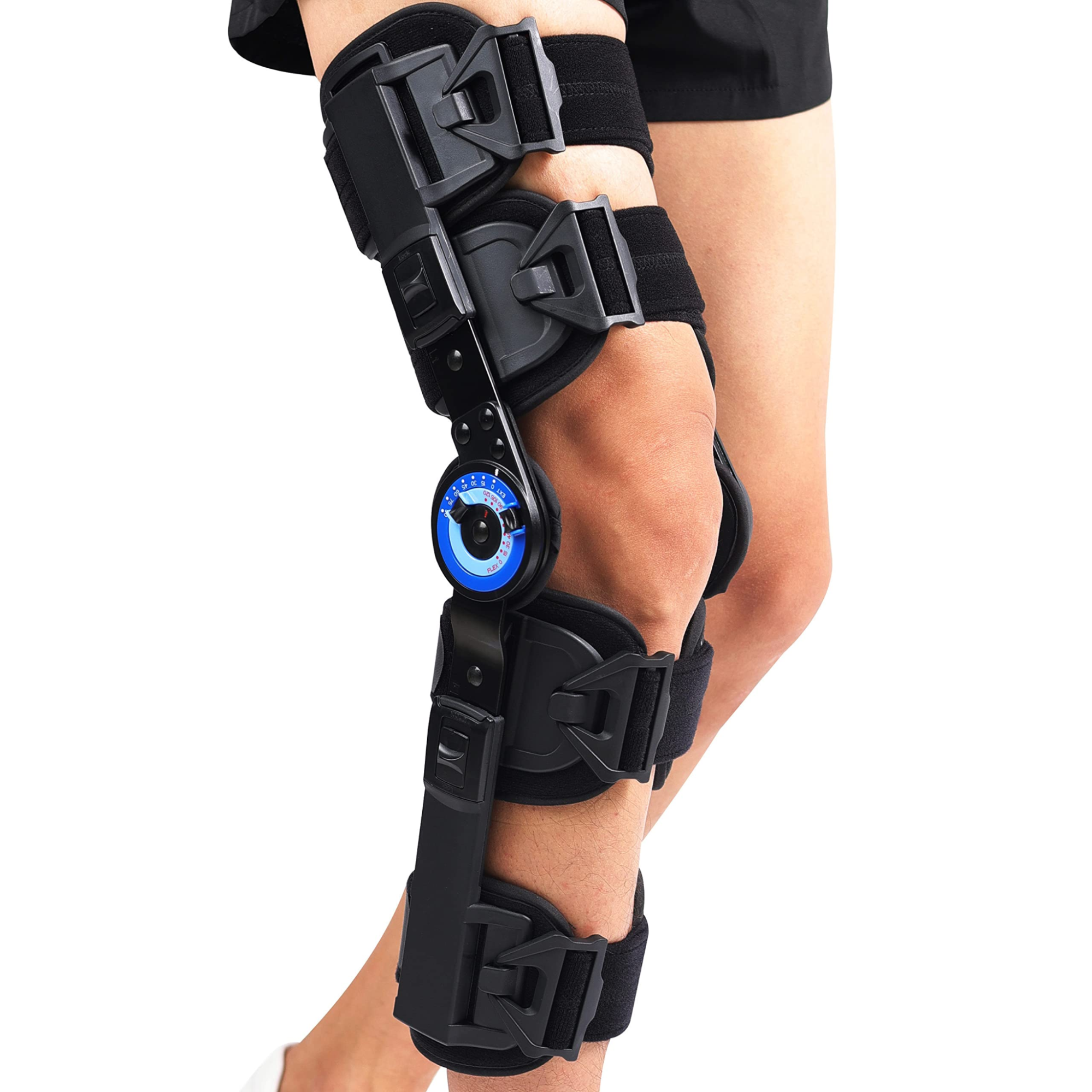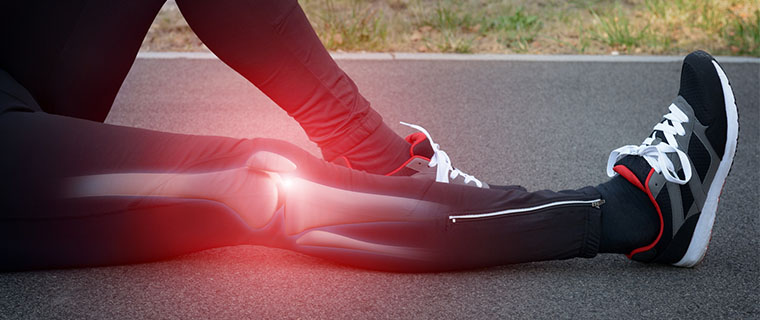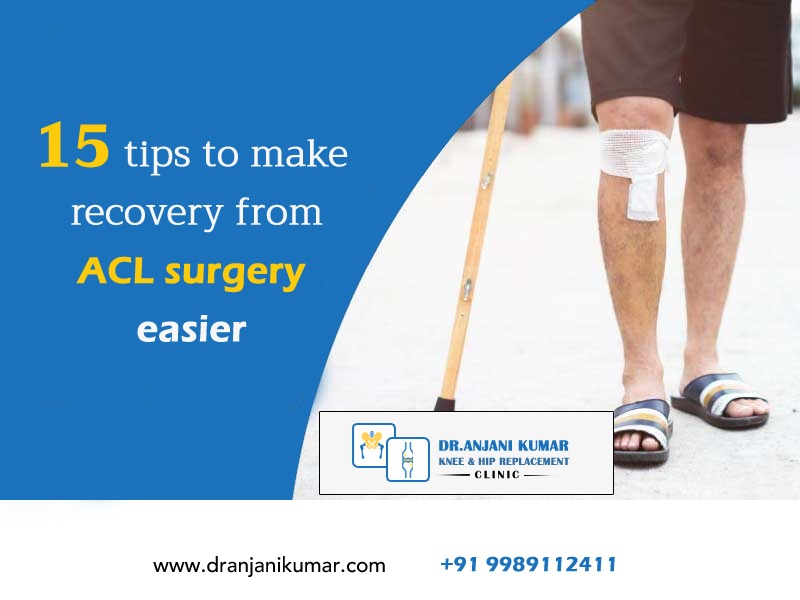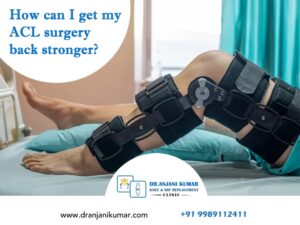A rupture or sprain of the anterior cruciate ligament, one of the important ligaments in the knee joint, is referred to as an ACL (anterior cruciate ligament) injury. The ACL, buried deep inside the knee, stabilises the joint and limits excessive forward tibial (shinbone) and femoral (thighbone) motion.
Rehabilitation process:
Here is some advice for recovering from ACL surgery that can make rehabilitation go more easily and effectively:
- Follow your surgeon’s advice: Follow your surgeon’s post-surgery recommendations for weight-bearing, wound care, medication, and appointment schedules. Their advice is crucial for a successful recovery.
- Physical Therapy: Take part in a thorough physical therapy regimen. To rebuild strength, flexibility, and stability in your knee, attentively participate in all sessions and diligently carry out the exercises and stretches advised.
- RICE therapy: Use the RICE approach (Rest, Ice, Compression, and Elevation) to reduce pain, inflammation, and swelling. Elevate your leg, wear a compression bandage, rest your knee, and frequently apply cold packs to lessen swelling.
- Pain management: To reduce and manage pain and discomfort, use painkillers as directed by your surgeon. Inform your medical team of any pain management concerns.
- Gradual Return to Activities: When it comes to the schedule for returning to activities like work, sports, and leisure interests, heed the advice of your surgeon and physical therapist. Increase activity time and intensity gradually to prevent overworking your knee while it is mending.
- Use Assistive Devices as Required: To support and safeguard your knee during the early stages of recovery, use crutches, a knee brace, or other assistive devices as directed by your doctor or physical therapist.
- Protect Your Knee: Take measures to guard against future re-injury to your knee. Avoid engaging in activities that place too much strain on your knee, perform exercises with correct form and technique, and consider using a knee brace when engaging in high-risk activities.

- Maintain a Healthy Diet:
Consume a nutritious, well-balanced diet to aid healing and recovery. Protein, vitamins, and minerals should be taken in sufficient amounts. If necessary, speak with a dietician or nutritionist.
- Rest and Sleep: Obtaining enough sleep each night gives your body time to recharge. A healthy amount of sleep encourages recovery and aids your body in coping with the strain of surgery and recovery.
- Stay Positive and Motivated: ACL surgery rehabilitation can be physically and mentally difficult. Remain optimistic and motivated. Positivity, motivation, and tiny victories should all be celebrated along the path. If necessary, seek assistance from family, friends, or a support group.
- Maintain Open Communication with Your Healthcare Team: Talk to your surgeon, physical therapist, and other medical staff to help you recover. Share any worries, setbacks, or alterations in your health as soon as possible.
12. Handle initial stage of recovery: Rest and immobilization are crucial during the first few days following surgery, as limiting weight-bearing on the operated leg is supported with crutches or knee brace as the surgeon recommends. To assist in minimising swelling, elevate your leg as much as possible. When sitting or lying down, try to keep the operative leg above your heart’s level. Follow your surgeon’s recommendations for wound care and dressing changes. Reduce the risk of infection by keeping the surgery incisions dry and clean.
- Exercises to Increase Range of Motion: Physical therapy will continue strengthening and enhancing your knee’s range of motion through stretching exercises. Carrying out these workouts consistently and within the recommended ranges is important.
Strengthening Exercises: Your physical therapist will introduce strengthening exercises for the muscles surrounding your knee, particularly the quadriceps, hamstrings, and calf muscles, as your range of motion improves.

Gradual Return to Daily Activities: As your recovery progresses, you can gradually resume simple daily tasks like housework, physically demanding jobs, and driving (if your surgeon has given the go-ahead and you are not currently taking any painkillers that impair your ability to drive).
- Dietary care: Protein is essential for tissue healing and repair. Include lean protein sources, such as tofu, dairy products, eggs, fish, poultry, lean meat, and lentils. Aim to consume the recommended amount of protein daily, which can change depending on your age, weight, and activity level.
Nutrient-Rich Foods: To make sure you’re getting a variety of vitamins, minerals, and antioxidants, eat a variety of fruits, vegetables, whole grains, and healthy fats. These vitamins and minerals are crucial for enhancing your immune system and promoting healing.
Vitamin C, D and Calcium: Collagen, vital for tissue healing, can only be made with vitamin C. Include foods high in vitamin C, such as leafy greens, tomatoes, peppers, citrus fruits, berries, kiwi, and others. An adequate calcium and vitamin D intake in your diet is essential for strong bones. Consuming fortified plant-based milk, consuming leafy greens and fortified orange juice, and getting some sun, vitamin C, and D levels can be maintained.
Omega-3 Fatty Acids: Due to their anti-inflammatory qualities, omega-3 fatty acids can assist in lessening inflammation and encourage healing. Include flaxseeds, chia seeds, walnuts, olive oil, and fatty fish.
Anti-Inflammatory Foods: Include foods like turmeric, ginger, garlic, berries, cherries, spinach, kale, and green tea with natural anti-inflammatory effects. These can aid in reducing inflammation and fostering recovery.
Fibre: Include fibre-rich foods, such as whole grains, legumes, fruits, vegetables, and nuts. Fibre aids with digestion, encourages fullness, and helps people stay at a healthy weight.
- Follow-up: Ensure you attend your surgeon’s scheduled follow-up appointments. They will evaluate your healing, remove any stitches or staples if required, and offer additional advice.
A trained dietitian or nutritionist may offer personalised advice based on your unique dietary requirements, preferences, and any underlying medical issues, so it’s crucial to seek their advice. They can promote quick recovery from ACL surgery by ensuring you get the necessary nutrition.
About Dr Anjani Kumar
As an orthopaedic surgeon in Hyderabad, I try to provide patients with as many options as possible for hip and knee treatments to help each patient have the greatest results. I carefully consider the specific sorts of injuries and need to be comfortable offering a specialised solution before recommending the best course of therapy for each patient. My patients’ enhanced mobility and pain reduction are always my top priorities, as these will enable them to resume an active lifestyle. In more severe cases, especially when the joint has collapsed, or the bone has suffered extensive deformation, knee replacement surgery may be advised.
Knee replacement surgery may be recommended in advanced cases, especially if the joint has collapsed or the bone has become severely deformed.
Dr Anjani Kumar has 20 years of experience and successfully performed 2000 knee replacement surgeries, 350 hip replacement surgeries, and 500 pelvic acetabular surgeries throughout his career. Please get in touch with us on Mobile: at +91 9989112411 and by E-mail: anjanikumar@ gmail.co




